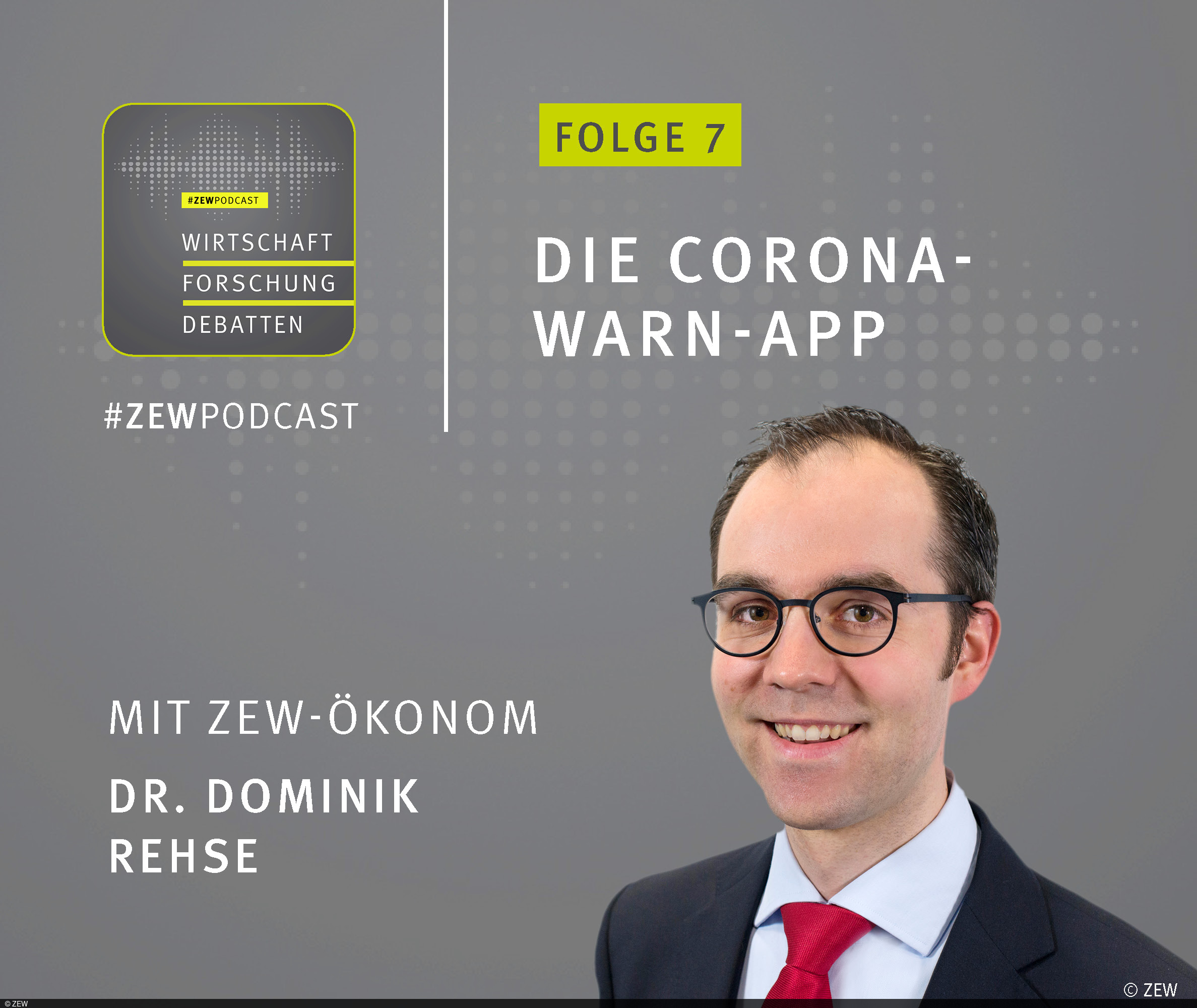Coronavirus Contact-Tracing App: Potential and Weaknesses
#ZEWPodcastZEW Economist Dr. Dominik Rehse in the #ZEWPodcast
When the coronavirus contact-tracing app was released onto the market, it was considered as one of the most important instruments in the fight against the pandemic. Up until now, these hopes have hardly been fulfilled. The number of app users is simply not high enough to be able to effectively curb the spread of the virus. There are also still significant data privacy concerns from the general public, and both user experience as well as success measurement are in need of improvement. In the most recent #ZEWPodcast episode, Dr. Dominik Rehse, head of the Junior Research Group “Digital Market Design”, talks about the potential and shortcomings of the coronavirus contact-tracing app. He explains why the app is nevertheless a good idea and how it could be improved with the help of a so-called ‘living laboratory’.
“The idea behind the app is that people who have been infected with the virus can inform other people they have been in contact with about this risk encounter so that the latter can take appropriate action to contain a further spread of the virus,” says Rehse. In the #ZEWPodcast “Wirtschaft · Forschung · Debatten”/“Economy · Research · Debates”, he also brings home the message of how the app could support local health authorities in the coronavirus crisis. Even if the coronavirus contact-tracing app warns a user that there has been a risk encounter, this person can only get tested by a doctor once symptoms start to appear. This calls into question the validity of the app. “Probably the most obvious shortcoming is that we operate the app in parallel to the contact tracing carried out by the local health authorities, which are actually responsible for this. There is absolutely no exchange of information between the app and the local health authorities. This also means that an actual capacity relief for the local health authorities is hardly possible this way,” explains Rehse. “Both contact-tracing systems should complement each other, rather than replace one another.”
Dominik Rehse suggests that the app could be improved with the help of a living laboratory. “A living lab attempts to test a policy measure in actual living environments before it is rolled out widely. For this purpose, all relevant parties involved in a specific policy measure are brought together to test how the measure works in a very controlled and risk-reduced setting. This makes it possible to test measures that entail certain risks and secondary effects.”
It would be possible to test in a living laboratory which incentives could be used to improve the dissemination of the app. A subsidy for smartphones would make it possible for people to access the coronavirus contact-tracing app who do not own an up-to-date mobile phone and would otherwise not be able to use the app. Pre-installing the app on all smartphones would also be conceivable. For example, access to public spaces by scanning a barcode instead of filling out a contact-tracing form is already being publicly discussed. All of these suggestions could, however, have negative consequences that would be initially tested in the living lab. As a conclusion, Rehse stresses the following: “The question of how the dissemination of such apps could be improved was of course asked many times before. And the short answer is: not by chance, but by very conscious design of dissemination strategies.”

